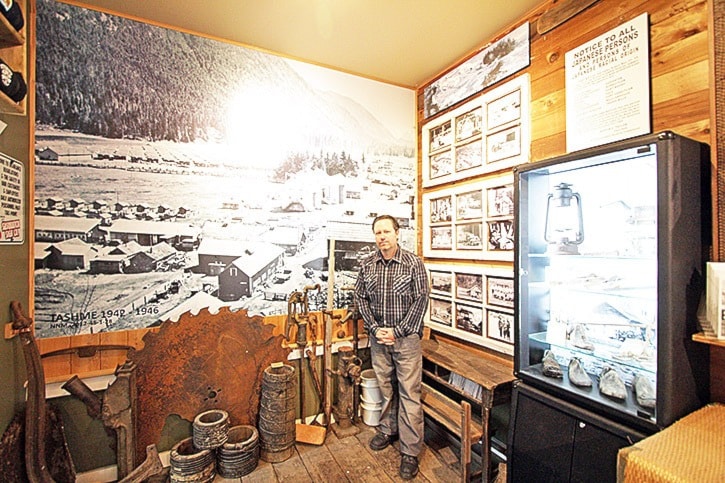Ryan Ellan grew up in Richmond's Steveston area and had many Japanese-Canadian friends.
“Some of my closest friends are Japanese descent, and as a kid hearing their parents' or their grandparents' stories of their time in internment ... I guess it just really touched me as a kid,” said Ellan.
Last November, Ellan developed the greatest expression of his interest in that era of Canadian history. He dedicated a room of his Sunshine Valley office to keeping the memory of Tashme alive by building a museum.
Tashme was the original name of Sunshine Valley and it housed 2,636 people in November 1942, according to the Nikkei National Museum and Cultural Centre (NNM).
Ellan kept this project a secret, only letting his wife and a part-time employee know about it. He wanted to take time to perfect the project.
In July, the doors to the museum finally opened up.
“But I didn't feel comfortable really advertising the opening until the (Nikkei) National Museum came up to the Valley and had a look of their own,” said Ellan.
A 14-person delegation came to the Tashme museum, including two Tashme internees, and gave Ellan the thumbs up.
Curiously, Ellan's building was the original butcher shop, and when he moved into Sunshine Valley eight years ago, he said he found many artifacts under the floorboards, in between walls and in the attic.
“Fortunately, this was the building that I think all the way through time, were if you didn't know where anything belonged in Sunshine Valley, you threw it in this building,” said Ellan.
It took him three weeks to clear the former barn out.
He kept the artifacts in boxes, bringing them out when he did walking tours every year with some help from the NNM.
“I always felt those artifacts needed a little bit more honour than living in a box,” said Ellan. “That's why I really decided to do this and get the stuff out.”
Last November, Ellan started renovating the front room of his Sasquatch Signs Company office.
“This room was strictly just a showroom for my business,” said Ellan. “Out of the feeling that something should be done this year, I dismantled most of the showroom and converted it into the Tashme museum.”
He said that room represents a good approximate of an internment camp house where multiple internees would bunk in.
Unlike today's Sunshine Valley, traffic did not have easy access to Tashme. The Hope-Princeton Highway was still under construction and Ellan said traffic to Hope would have to travel three hours on a wagon road.
This engendered a need for a self-supporting internment camp. According to NNM maps, the camp had a hospital, a baker, a butcher shop, schools, gardens, pigsties and a church.
The camp housed mostly seniors and parents with their children.
Tashme is also the closest internment camp to Vancouver that sits outside the 100-mile Japanese exclusion zone, where mile zero starts at the coastline.
The museum is located at 14781 Alpine Blvd., and Ellan said it is open during office hours weekdays and on Saturdays 10 a.m. to 4 p.m. He warns that sometimes he might leave the museum for a while but will inform on when he will return.
The NNM has more information about the camp at tashme.ca.
